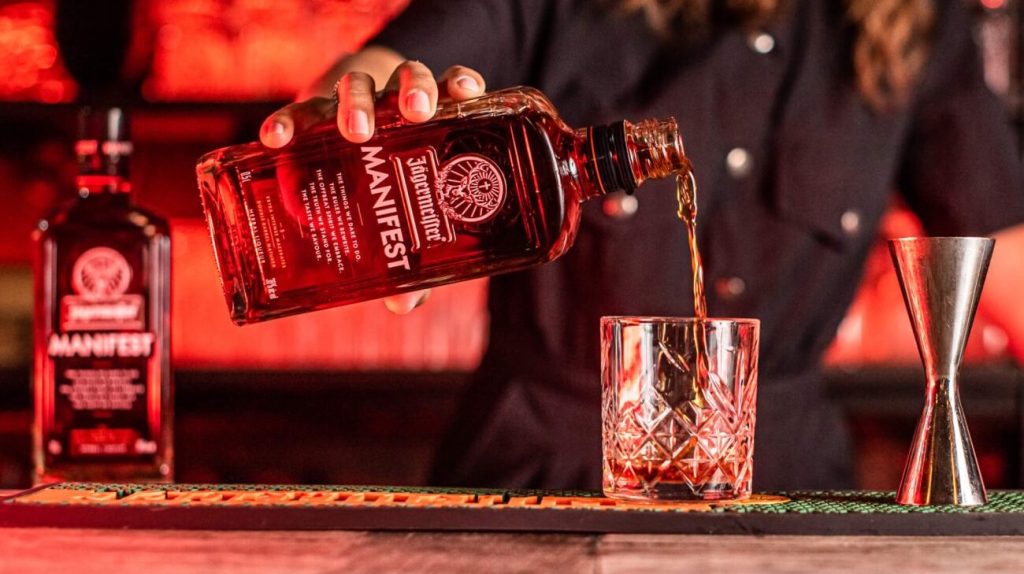The Vue felt unusually alive last Wednesday night (16 July). Not in the way a club surges to life when a beat drops, but in that slow, simmering way where strangers start talking, the liquor loosens ideas, and suddenly everyone’s asking big questions about the city we live in.
Jägermeister hosted a launch for Jägermeister Manifest, their new “ultra-premium” spirit, under the banner of a sensory dinner. It could have been just another corporate event: free drinks, a few platitudes about craftsmanship, then everyone leaves. Instead, it felt more like a microcosm of what Cape Town could be if we invested in creative spaces that prioritise connection over commerce.
The night began stiffly. People in all-black outfits (some with a touch of red) made polite small talk over cocktails. The Jägermeister Manifest Sour was definitely a personal favourite. But as the first plates arrived — velvety chicken liver parfait and charred leeks under curls of aged cheddar — something softened. Conversations deepened. There was no agenda, no forced networking, just curious people — from venue managers to artists to freelance writers — asking each other how we got here, what’s working, and what’s not.
It’s hard not to contrast that with Cape Town’s music ecosystem. For a city with so much artistic talent, we still lack infrastructure that nurtures it (sadly a song South Africa is all too familiar with). The pandemic gutted our live music spaces, and despite glimmers of recovery the scene feels fragile, like it’s still recovering.
What struck me about the Jägermeister Manifest dinner wasn’t the luxury (though the picanha steak and duck-fat potatoes were the best I have ever had). It was how rare it is to sit in a room where people from different corners of culture feel seen and heard. That shouldn’t be reserved for carefully curated brand events.
If there’s a lesson here, it’s that Cape Town needs more spaces where curiosity leads, where we can experiment without the weight of commercial expectations. Jägermeister created one for an evening. The challenge is building them into the fabric of our city’s culture.



